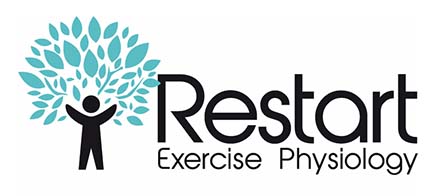Hip pain has many possible causes, including arthritis, injuries and localised muscle weakness. Whatever its cause, it can significantly affect your quality of life.
Exercise Physiology can help you to move more easily once again.
What is hip pain?
Hip pain quite simply refers to pain or discomfort in and around your hips. It might mean that it’s uncomfortable to lie on one side, or that your hips feel stiff or hard to move.
Incorrect movement patterns, bone density changes, or injury can wear down your hips and cause pain, as can spending too much time sitting. Your hips are a complicated structure with many different parts. Hip pain can therefore stem from several different sources and requires careful diagnosis and tailored treatment.
How your hips work
Your hips are one of your body’s largest weight-bearing joints, forming where your thigh bone meets your pelvis in a ball-and-socket joint.
Your hip involves several different body parts working together including:
- The bones of your femur (thigh) and pelvis;
- Cartilage, a smooth substance that covers the bony surfaces inside the ball and socket joint;
- Ligaments, strong bands of tissue which connect the ball to the socket to stabilise your hip and form a joint capsule;
- Synovium, a thin membrane that produces a fluid to lubricate the joint;
- Bursae, fluid-filled sacs that provide a cushion to reduce friction between your muscles, tendons and bones so that they move easily;
- Large muscles that support the joint and enable movement. Those muscles include (but are not limited to) your:
- Gluteals (buttocks)
- Adductors (inner thigh muscles which help you to pull your legs together)
- Iliopsoas (a muscle in the lower back that connects to the upper femur)
- Quadriceps (four muscles on the front of your thigh)
- Hamstrings (muscle group on the back of your thigh);
- Major nerves including the:
- Sciatic nerve (back of the hip)
- Femoral nerve (front of the hip).
Exercise Physiology for hip pain
Exercise Physiology is an evidence-based therapy that improves your strength, endurance, flexibility and mobility.
Your body is built to move. When you’re in pain, it’s all too easy to move less and less, establishing a vicious cycle that further compromises the integrity of your hip joint.
An Exercise Physiologist helps you to learn how to move again in a way that helps your body regain its strength and vitality.
Hip treatment at Restart Exercise Physiology
When you come to us with hip pain, we start by listening to you carefully. We’ll ask about your symptoms, discuss your medical history and examine your movements. Your Exercise Physiologist will then prescribe a series of exercises to strengthen your hips, improve your mobility and ease your pain. Much like how we helped Julia, aged 43.
“As someone who has suffered for many years with pain from congenital hip dysplasia, I thought I’d never have pain free days and was just waiting until I’d have to have a hip replacement. In the past 6 months Luke has helped me so much in my weight-loss, general fitness and teaching me how to self-manage my pain, that I’m excited to say I have mostly pain-free days now! He’s motivating and always encouraging, and he knows how to get the best from me.
I highly recommend Restart EP to anyone who needs an Exercise Physiologist.”
To put hip pain behind you, contact Restart today!
